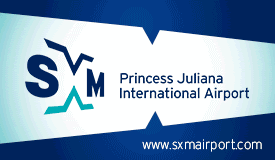~Given vulnerability to shocks~
Willemstad/Philipsburg:--- The tourism sector is currently the main economic pillar in both Curaçao and Sint Maarten, not only in terms of the direct and indirect contribution to GDP and employment but also in terms of foreign exchange earnings. A frequently mentioned concern with regard to highly dependent tourism economies is, however, their vulnerability to shocks. The collapse of the tourism and travel industry on the back of the COVID-19 pandemic has intensified this concern. “Having a more diversified economy where the tourism sector is complemented with other sectors as key drivers of growth would make Curaçao and Sint Maarten less susceptible to shocks,” according to the Centrale Bank van Curaçao en Sint Maarten (CBCS) president, Richard Doornbosch in the June 2024 Economic Bulletin. “The reality is, however, that it often takes time before the efforts to develop a new sector pay off. Hence, while we are working on broadening our economic base, it is crucial to focus on the resilience of the tourism sector, which is currently our economic mainstay”.
Vulnerability to shocks
Sint Maarten has traditionally been a tourism-dependent economy, while Curaçao has become more reliant on tourism over the past two decades as the contribution of previous key economic pillars, such as the refining and international financial services sectors, have gradually faded. “A high-level comparison between tourism-dependent economies in the Caribbean, including Curaçao and Sint Maarten, shows that a high degree of tourism specialization does not seem to correlate with lower economic performance. Highly tourism-dependent economies seem, however, to face a higher degree of economic volatility due to greater exposure to shocks”, explained Doornbosch.
These shocks are inherently hard to predict and to control. “While they may not be of the same magnitude as the COVID-19 pandemic, several other shocks could affect the tourism sector in the short and medium term”, warned Doornbosch. “These shocks include increased inflationary pressures that curb consumers’ purchasing power, causing a decline in discretionary spending on, for example, restaurants, hotels, and other tourism-related services. In addition, a surge in international oil prices that increases the cost of transport and supply chain disruptions that affect the availability of materials, in turn delaying construction of tourism-related infrastructure, could affect the industry. Finally, the occurrence of more frequent and severe natural disasters due to climate change could also have devastating effects on the tourism sector”.
Policies for Sustainable Tourism
Against this background, Doornbosch provided several recommendations to make the tourism sector more resilient and sustainable. “An important precondition for greater resilience in tourism is the availability of data, insights, and indicators. In case of an acute shock, an evidence and data-driven approach is crucial for key stakeholders, such as the government and business sector, to take effective measures. The action that is being taken in Curaçao to develop Tourism Satellite Accounts that enable us to measure the impact of tourism is, therefore, a welcome development. Given the open border with French Saint Martin, the Bank has started to exchange information with the French authorities on this part of the island to improve analyses on the impact of tourism in Sint Maarten.”
“In addition, diversification of source markets and service offerings can make the tourism sector more resilient to shocks. Also, businesses, particularly small and medium enterprises, that are involved in the tourism supply chain should be better equipped to cope with external shocks. The policy actions that need to be taken in this area are well-known and include improving access to finance and reducing red tape and administrative costs. Moreover, businesses in the tourism supply chain can become more resilient if they capitalize more on the possibilities of digitalization. The government could play a facilitating role in this regard,” added Doornbosch.
Finally, current weaknesses in the labor markets of Curaçao and Sint Maarten need to be addressed so that the tourism sector can become more resilient. One key characteristic of the tourism industry is its high labor intensity. At the same time, the quality of human resources to develop and deliver competitive services is paramount. “Challenges that currently affect the tourism sector include a lack of skilled labor, informal activities, and the perception that tourism offers primarily temporary low-paid jobs. To address these challenges, the government and business sector should collaborate in providing more tourism-specific vocational training but also integrate tourism into the school curriculum. Furthermore, current restrictions for the entry of foreign workers should be reviewed. Moreover, campaigns should be launched to improve the image of the tourism sector as an employer”, said Doornbosch.
“For an effective implementation of all the necessary actions for a sustainable contribution of tourism to the economies of Curaçao and Sint Maarten, the execution of a comprehensive tourism development plan involving all key stakeholders seems the best way forward to inclusive growth and prosperity”, concluded Doornbosch.
The complete text of the June 2024 Economic Bulletin is available on the CBCS website at https://www.centralbank.cw/publications/economic-bulletins/2024.
Willemstad June 26, 2024
CENTRALE BANK VAN CURACAO EN SINT MAARTEN











